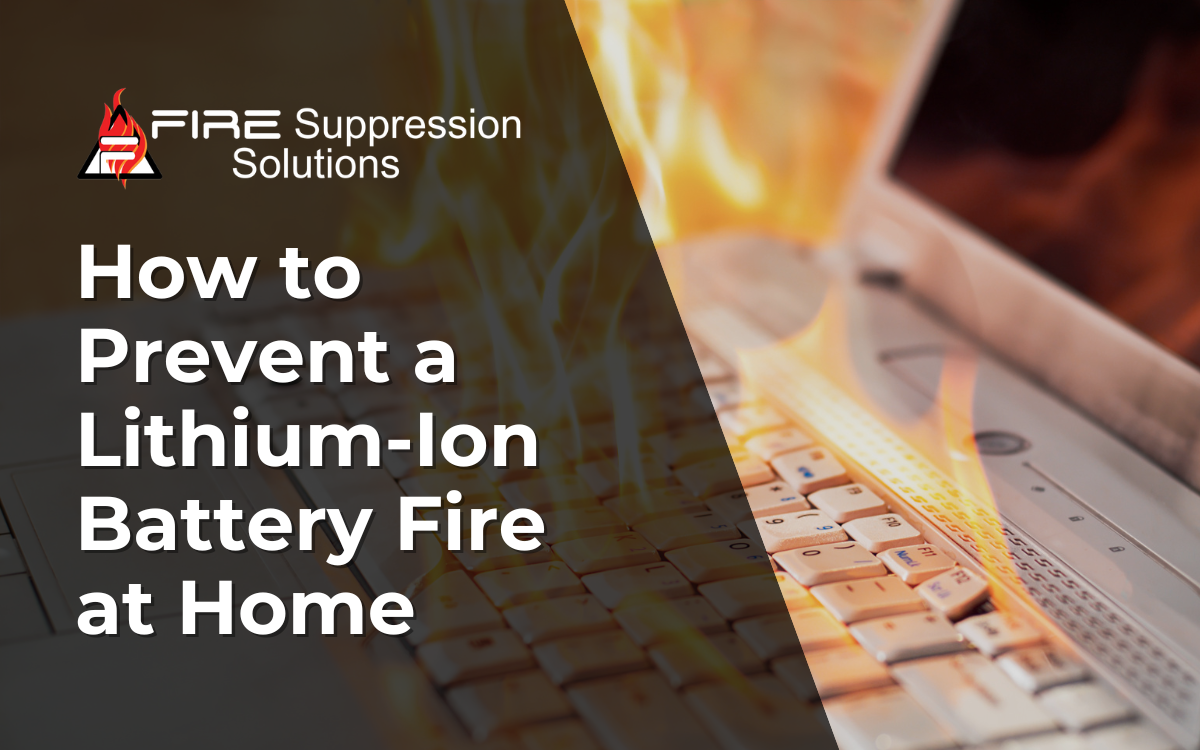Lithium-ion batteries power many of the devices we rely on every day: smartphones, tablets, laptops, electric toothbrushes, cordless tools, e-bikes, toys, and more. But while these batteries are lightweight and efficient, they also carry an often-overlooked risk: fire.
Unlike typical household fires, lithium battery fires can ignite suddenly, burn extremely hot, and even re-ignite after being extinguished. As more lithium-powered devices enter our homes, the risk rises—especially when batteries are damaged, improperly stored, or begin to degrade.
Here’s how to prevent a lithium battery fire at home and protect the people and property you care about most.
Why Do Lithium Batteries Catch Fire?
Lithium-ion batteries can enter a dangerous state called thermal runaway, often triggered by:
- Overcharging
- Physical damage (e.g., dropping a device)
- Heat exposure
- Manufacturing defects
In thermal runaway, heat builds rapidly inside the battery, causing internal reactions that release flammable gases. The result? A sudden, intense fire that’s difficult to put out and may reignite hours or even days later.
Common Places Lithium Batteries Are Stored at Home
Take a moment to think about where you keep devices and batteries in your home. Risky storage areas often include:
- Junk drawers with keys, coins, or loose wires
- Utility cabinets near heat sources or flammable items
- Charging stations on soft surfaces like beds or couches
- Garages or sheds with fluctuating temperatures
Knowing where potential hazards are lurking is the first step in preventing a lithium battery fire.
7 Ways to Prevent a Lithium Battery Fire at Home
- Use the Right Charger
Always use the charger that came with your device or one certified by the manufacturer. Cheap or knockoff chargers can overheat batteries. - Don’t Overcharge
Unplug devices once fully charged. Overcharging, especially overnight or unattended, increases the risk of overheating. - Store Batteries Safely
Don’t toss spare batteries into junk drawers or toolboxes where metal objects might touch the terminals. Store them in original packaging or use a battery case. - Avoid Heat and Sunlight
Keep devices and batteries away from windowsills, radiators, or hot cars. High heat can trigger thermal runaway. - Replace Damaged or Swollen Batteries
If a battery looks puffy or smells odd, stop using it immediately. Do not attempt to puncture or dispose of it in the trash. - Dispose of Batteries Properly
Take old or dead lithium batteries to a designated recycling center. Never throw them in household trash or recycling bins. - Have the Right Fire Tool on Hand
A traditional fire extinguisher won’t stop a lithium battery fire. Keep a StaySafe All-in-One Fire Safety Device nearby—it’s designed to tackle electrical, battery, and kitchen fires with a clean, residue-free discharge.
What to Do if a Lithium Battery Catches Fire
If a device begins smoking, hissing, or swelling:
- Stop using it immediately.
- Move it to a non-flammable surface, away from people and pets, if it’s safe to do so.
- Ventilate the room.
- Use a lithium-capable extinguisher if flames appear.
- Call emergency services if the fire spreads or can’t be contained.
Never attempt to put out a lithium fire with water—it can make things worse by spreading flammable electrolytes or causing short circuits.
StaySafe: Peace of Mind in the Palm of Your Hand
The StaySafe All-in-One Fire Safety Device gives families a safe, no-hassle solution for small fires, including lithium battery incidents. Compact, easy to store, and residue-free, it’s the ideal tool to keep in your kitchen, garage, junk drawer, or backpack.
When it comes to your home and family, being prepared isn’t overkill. It’s common sense.
Want to stay safer this season? Shop StaySafe today.

